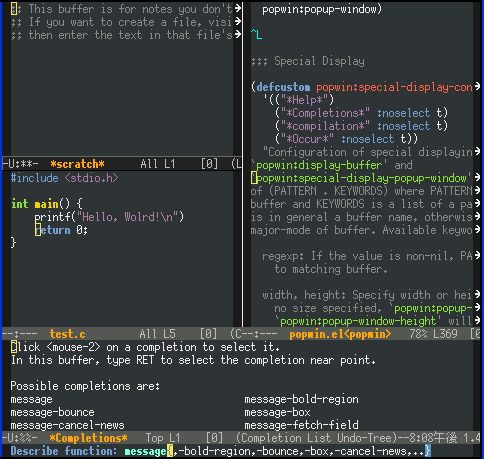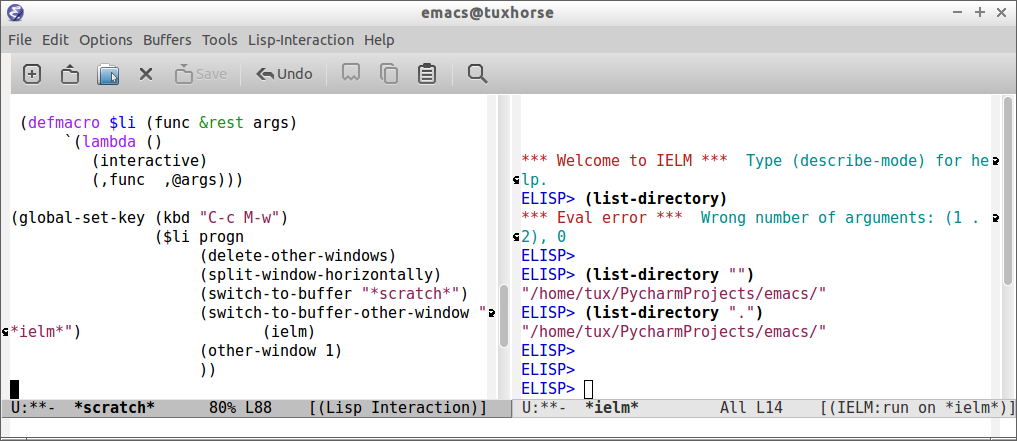

That kind of tight feedback loop will be useful while learning Clojure and, later, when writing real Clojure programs.
#Emacs close buffers code#
The reason I recommend Emacs is that it offers tight integration with a Clojure REPL, which allows you to instantly try out your code as you write. Two alternatives that I recommend and that are well regarded in the community are Cursive and Nightcode. If you don’t follow the thorough Emacs instructions in this chapter, or if you choose to use a different editor, it’s worthwhile to at least invest some time in setting up your editor to work with a REPL. I highly recommend working with Emacs, but you can, of course, use any editor you want. On your journey to Clojure mastery, your editor will be your closest ally.
#Emacs close buffers how to#
The active window becomes the largest window and all other windows are automatically shrunk so they are out of the way, but still visible.Chapter 2 How to Use Emacs, an Excellent Clojure Editor

Golden-ratio automatically lays out windows in a Fibonacci style pattern. Revert buffer to file saved on disk (causes. Toggle read-only mode on a buffer (Spacemacs Org docs open in Read-only mode by default) Open Spacemacs scratch buffer - a persistent buffer for random note taking Open Spacemacs *messages* buffer - log of Emacs actions and commands Show list of open buffers and recently opened buffers Open buffer transient state menu for multiple command SPC TAB toggles between the current buffer and the last active buffer Key Binding Buffers can show the contents of a file, search results in a helm-popup, an interactive process e.g. Open Window transient state menu for multiple commandĢ window layout - shows current buffer in new windowģ window layout - shows current buffer in new windowsĪ buffer is the fundamental presentation of information in Emacs. Windows are used to display multiple buffers (files, REPL, error messages, etc) within the same frame Key Binding SPC followed by a number jumps to the window with that number, e.g. Each window is assigned a unique number when created, even across multiple frames. Working with windowsĮach frame contains one or more windows. SPC F d closes the current frame, unless its the last Emacs frame running, then Emacs itself closes. SPC F n creates a new frame containing a single window that contains a buffer. Spacemacs also adds Layouts to manage a set of buffers within the scope of a project and Workspaces allow multiple window configurations Working with Framesīy default, Spacemacs opens with a frame that contains a single window, that window containing the Spacemacs home buffer. Also referred to as the mode line.Ī command line for Emacs - shows commands and some results, acts as an interactive prompt for some commands window number, buffer mode & name, location of cursor. Information about current window and buffer, e.g. Opening another frame gives you another instance of Emacs Understanding the basic terminology will help make the most out of Spacemacs and allow very effective use.Ī container to display a file or other information (file navigation, REPL, data inspector, test report, etc.)Ĭontains a buffer, organises multiple buffers in a frame


 0 kommentar(er)
0 kommentar(er)
